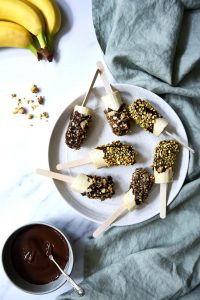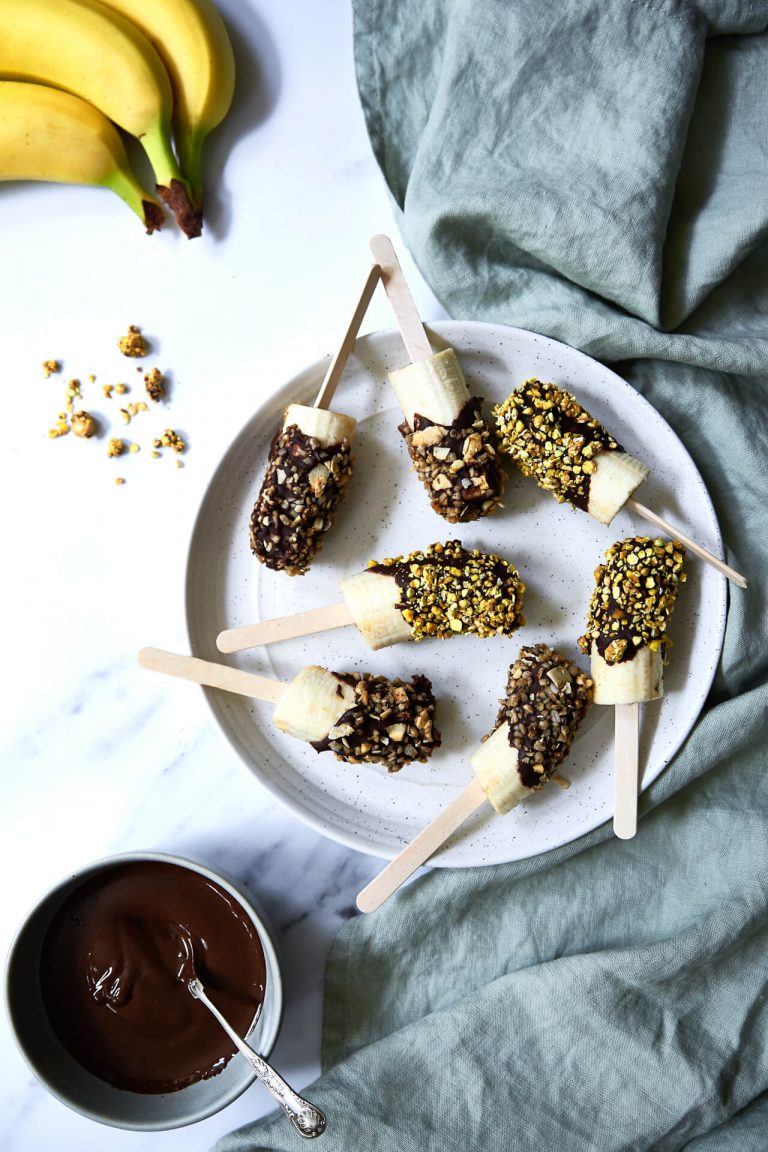Gut health. Not the nicest of terms, but one that is popping up everywhere in the mainstream media, making us all aware that we should be taking more care of that area of our bodies. Eating fermented foods is high on the list of ways to improve our gut health, so we asked food lover and photographer Katia Wlodarczak of Gourmand Pixels to share three fermented recipes for which she has a little more knowledge of than most….
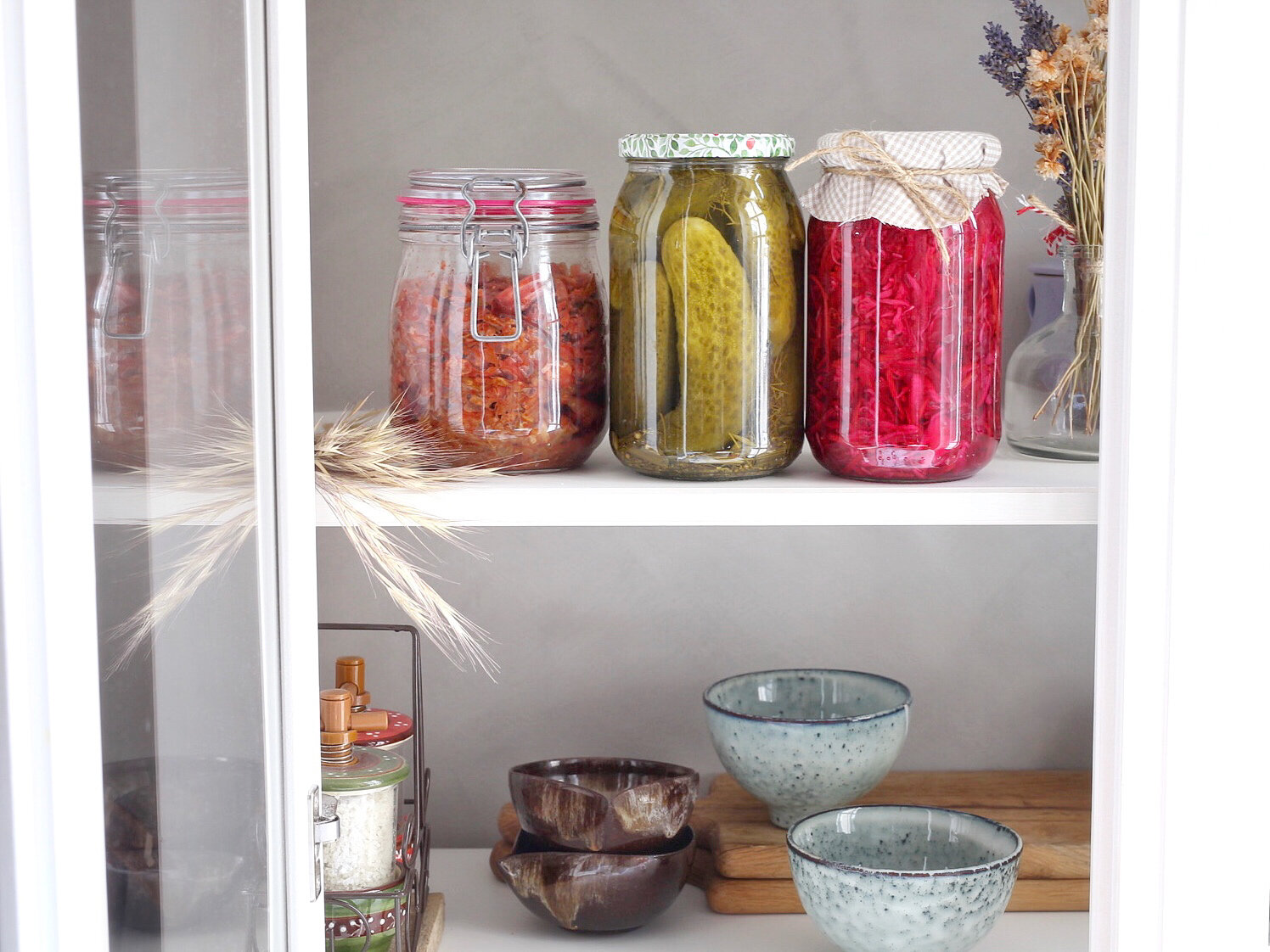
The trend for fermented foods is growing, but this is hardly a new concept – they have been around for centuries. Originally – before refrigeration – fermentation served the purpose of food preservation, so it could still be enjoyed outside the seasons when otherwise it would be unavailable.
I come from Russia and fermented foods and beverages have always been a part of our culture and diet. We’re used to sour, tangy flavours – kefir and its variations, sauerkraut (we call it sour cabbage), fermented cucumbers, tomatoes and all sort of other vegetables. Fermentation is a process that involves the breakdown of sugars by bacteria and yeast. This helps to enhance preservation but also the taste of the foods, giving them added complexity. Plus, the process works other magic on food – changing it and adding nutrients (like vitamin b12). It tends to boost a number of beneficial bacteria or probiotics, found in your gut. Probiotics have been associated with improved digestion and better immunity.
Eating probiotics from childhood can help to train the immune system to tolerate and cooperate with a diverse beneficial microbiome. Adding fermented foods to your diet is quite easy. You can buy it in a variety of shops but look for non-pasteurised versions, and without vinegar. Labels should contain words like ‘live bacteria’, ‘naturally fermented’ as you still want that bacteria to be alive and kicking. Otherwise, there is no benefit to your health.
Another alternative is to make your own. The process of fermentation is surprisingly simple and affordable. With only a few ingredients, it can be done at home, saving you money, bringing new flavours and sense of adventure to your table. Vegetables are the easiest to ferment as bacteria living on their surface does the fermentation for you.
Here are a few recipes that you can try making now, bringing new flavours and textures while improving your health….

CABBAGE & BEET SAUERKRAUT
Preparation: 20 min. Fermentation: 3 weeks
You will need:
- scales
- a sharp knife
- a bowl
- a 1 litre sterilised fermentation jar
Ingredients:
- 1 kg purple (or white) cabbage
- 1 raw beetroot
- 4tsp sea salt
- 1 tsp caraway seeds
- 1 tsp freshly ground black pepper
- 1 tsp of spices that inspire you (I can’t do without dill)
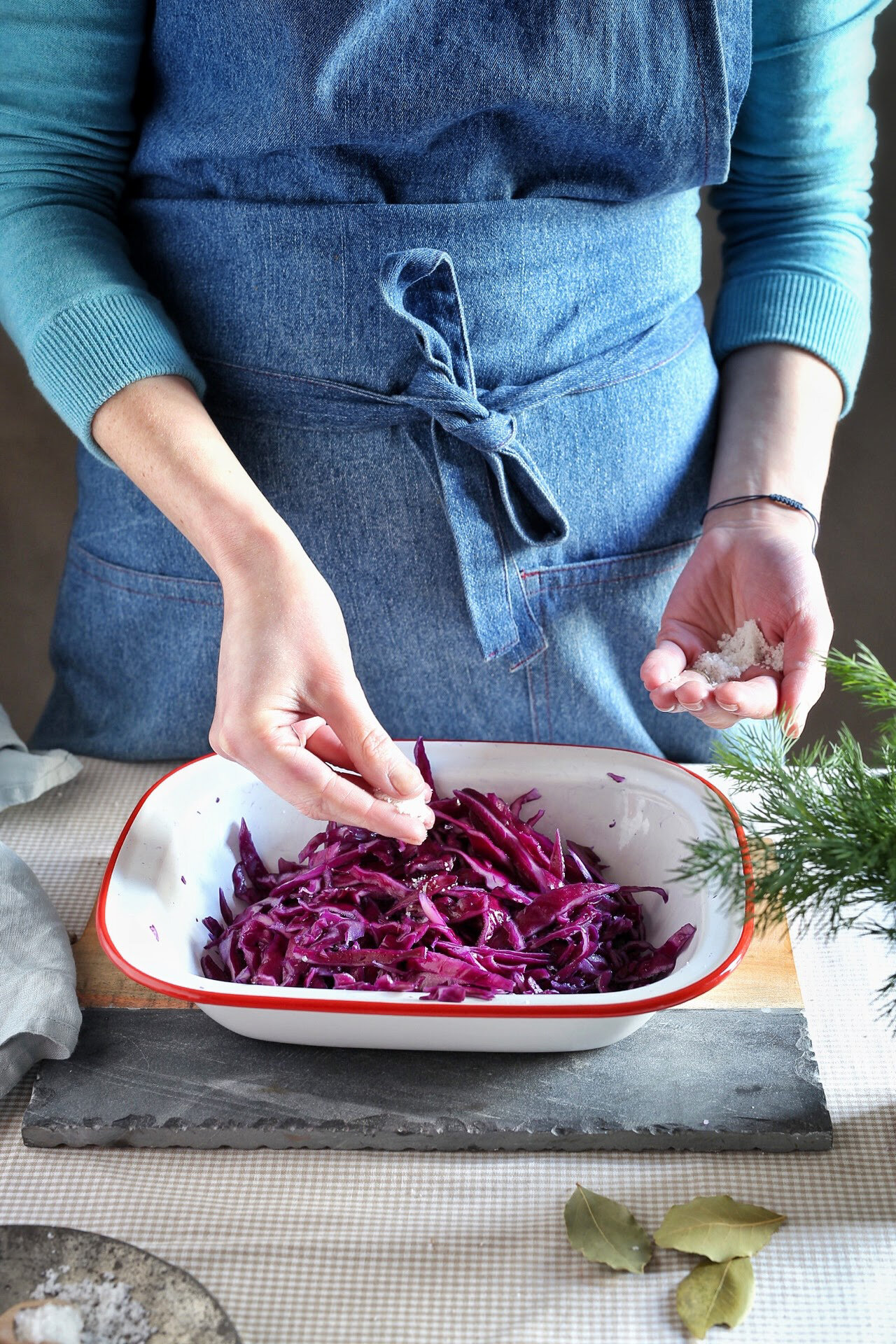
Method:
- Shred the cabbage and put it in a bowl. Add the salt and all the spices.
- Mix with your hands for several minutes, until the cabbage begins to release water. This should be a pleasant mindful experience – cabbage massage. 🙂
- Peel the raw beetroot and grate or julienne into the cabbage, mixing through.
- Transfer to a jar in small quantities, pressing down each time by hand or using a pounder. The liquid that is produced should submerge the cabbage.
- Place a weight on top of cabbage, to keep cabbage submerged. You can use another sterilised jam jar filled with water or rice.
- Cover the jar with a dry cloth, secure with a rubber band or string. The aim is to keep the cabbage submerged in water. If after 24 hours, it is not, dissolve 1 tsp of salt in 200ml water and add as much as you need to submerge the cabbage.
- Place the jar in a dark cool place (15-25C). Check it every day pushing down the cabbage every time. Leave it for 3-6 days. Begin tasting after three days and leave longer if you’d like a stronger, more pungent flavour.
- If you see any bubbles or froth, this is normal as it means fermentation has started and the bacteria is doing its magic.
- Once you achieve the desired flavour, seal with the sterilised lid and keep in the fridge. Even better to split it into a couple of smaller jars. Unopened sauerkraut can keep for up to 3 months. Once opened, consume within a week.
How to eat: As a side dish, accompanying rich meals, as part of a sandwich, wrap, toastie, baguette or just by itself. Search for more sauerkraut recipes online.
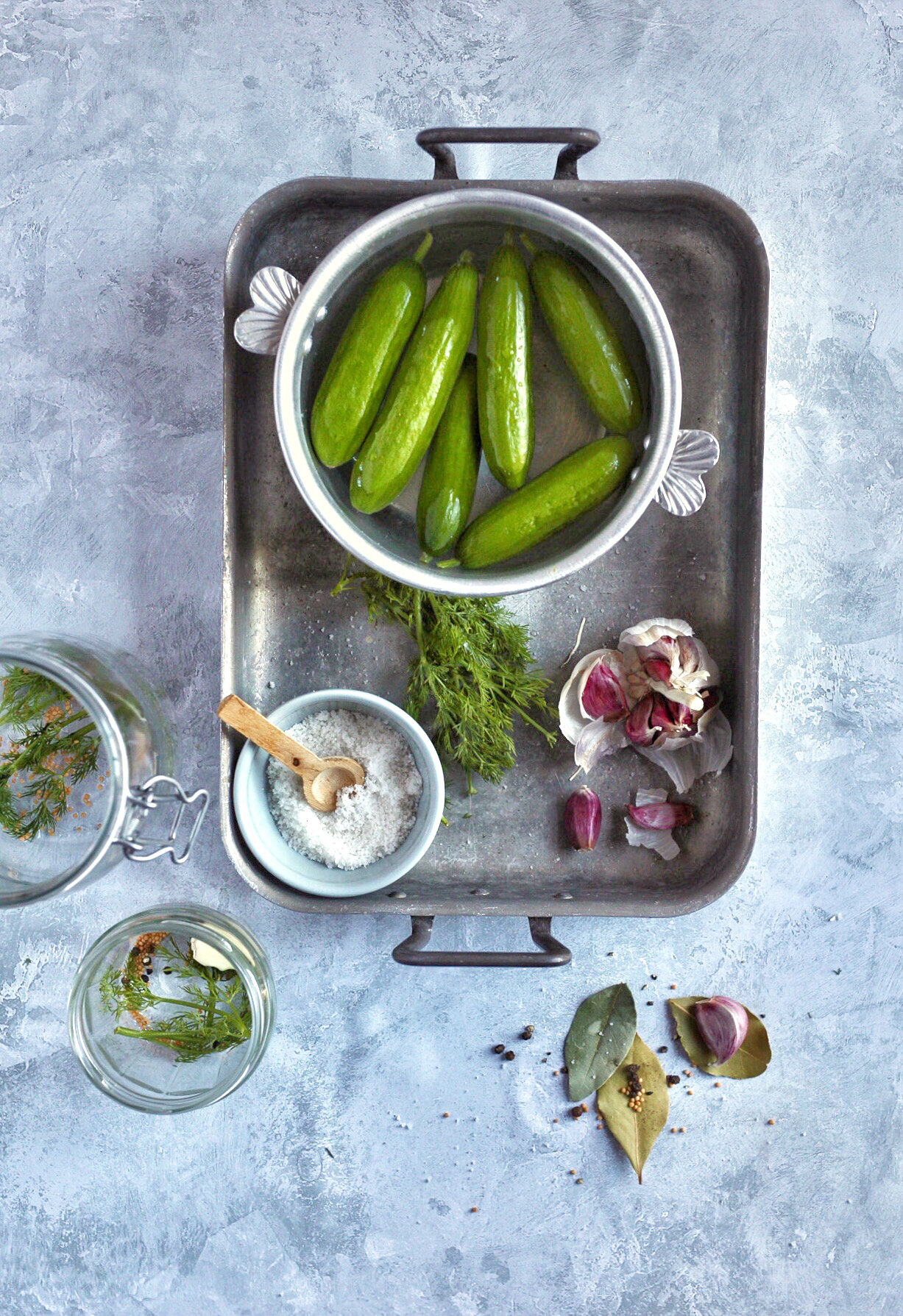
PICKLED CUCUMBERS
Preparation: 30 min, Fermentation time – 1 day to 3 weeks
You will need:
- scales
- bowls
- 2 x 1 litre jars
Ingredients:
- 1 kg of cucumbers (ideally small ones, otherwise any you can find)
- 1.5 litres cold water
- 5% Sweet BRINE: 8 tsp salt, 1 tbsp granulated sugar, 1 L of water
- 2 garlic cloves
- a bunch of fresh dill
- 1 tsp black peppercorns
- 2 tsp yellow mustard seeds
- 1tsp caraway seeds
- 2 bay leaves
Method:
- Place cucumbers in cold water, if possible with ice cubes and let them soak for 8 hours (this will keep them crunchy until after the fermentation)
- Prepare brine, dissolving salt and sugar in water
- Pack cucumbers into sterilised jars – either whole if they are small enough, or slice into preferred shape
- Divide spices, dill and garlic between two jars and cover with brine
- Close the lids and screw on tightly. You will need to let the pressure escape once a day for the first three days by unscrewing the rings slightly for a few seconds, then resealing airtight. Ferments don’t like oxygen.
- Let it ferment at 18-25C for 1-3 days for ‘new cucumbers’, 7 days for half sours, and 3 weeks for ‘full’ flavour.
- You can either eat straight away or store in the fridge for up to 6 months. Once the jar is opened, consume within 2 weeks.
How to eat: I add these to classic a French baguette – pate and gherkin, burgers, as well as toasties or even potato salad.
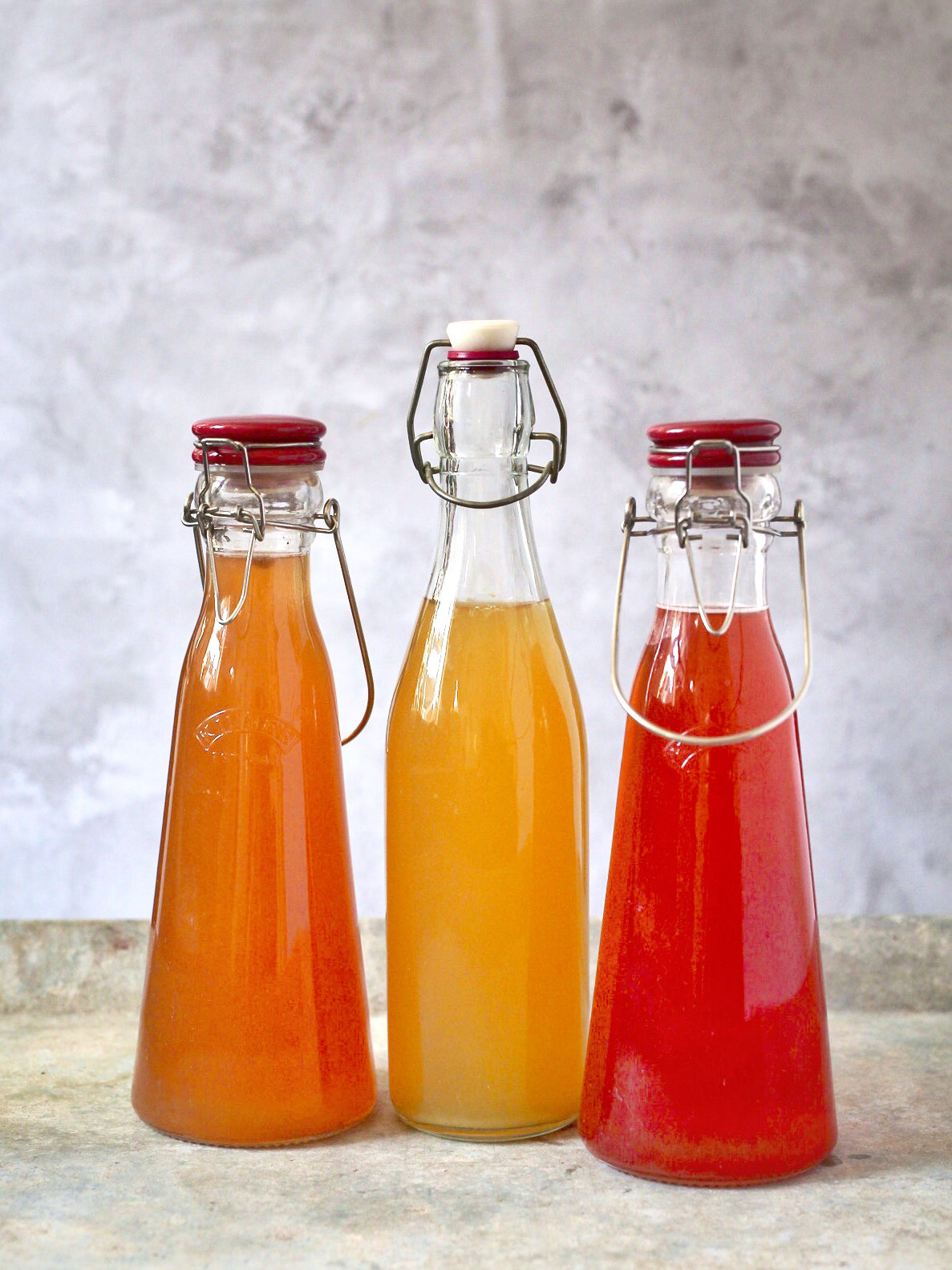
KOMBUCHA
Preparation time: 20 min, Fermentation time: 7- 16 days
Though originating from China, I remember it from my childhood back in Russia. Everyone seemed to have had a big three litre jar in the house, with a weird slimy thing in it, filled with a delicious fizzy, tart drink. It is now readily available in supermarkets and restaurants in the UK, but it is usually pricey, hence why it’s worth having a go at making your own. It’s easier than you might think!
You will need:
- a large pot (bowl)
- a fine sieve
- a large (3-4L) glass jar with wide mouth
- breathable fabric
- elastic band or string
- funnel
- airtight bottles (such as flip top bottles)
Ingredients:
- Kombucha mother (SCOBY)
- 3 litres of water
- 8 standard bags of green, black or white tea (its up to you what quality you choose, any will do the job, just make sure it is full flavour)
- 8-10 tbsp of granulated cane or brown sugar
- Aromatics: any of your choice – herbs, frozen or fresh berries, ginger root, citrus fruit
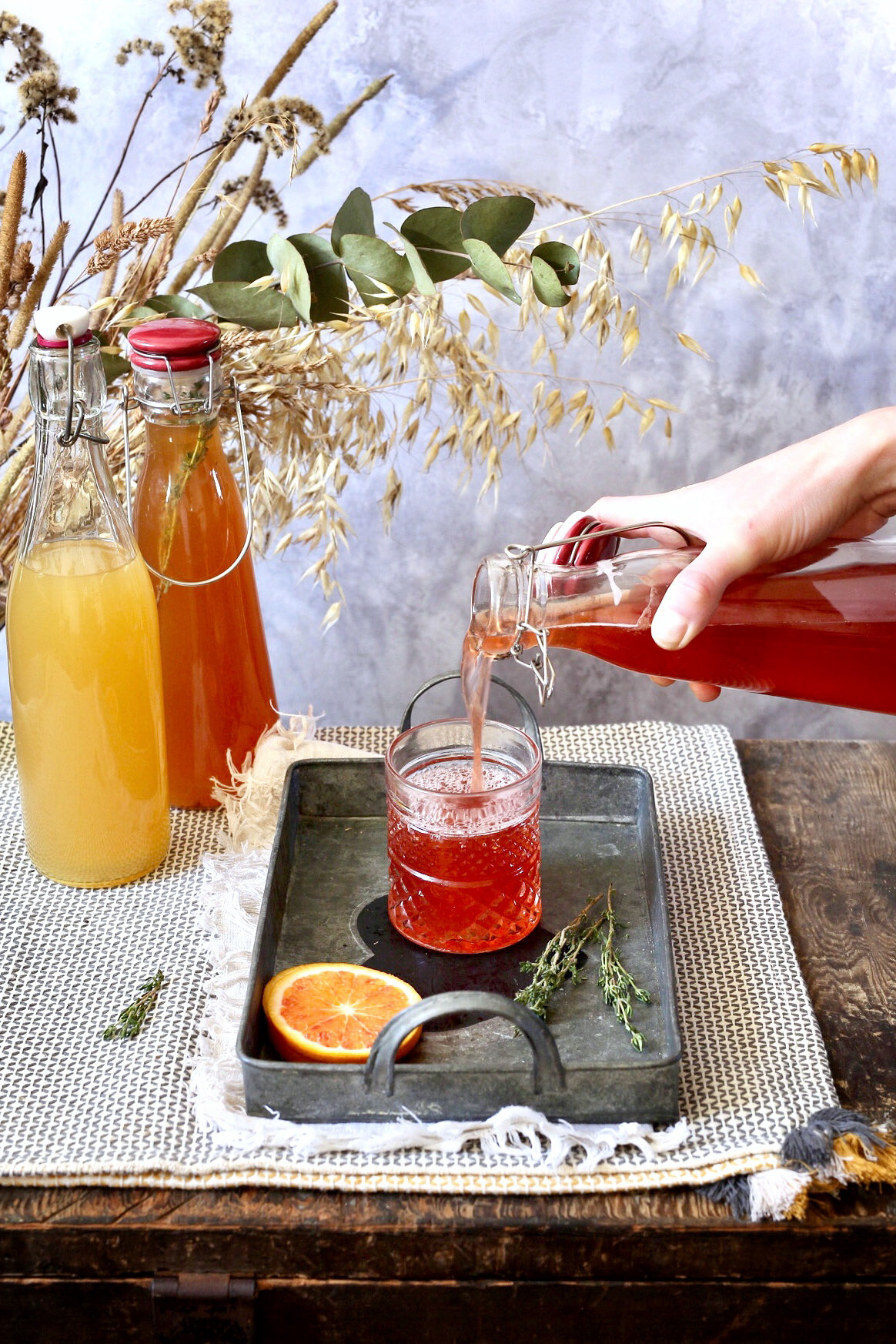
Method:
- Prepare the tea by adding almost hot water to your tea bags and let steep for 5 minutes (green and white tea may be less, see instructions on the packet)
- Add the sugar to the tea and mix until dissolved, taste to ensure it is sweet. Add more sugar if necessary. Leave it to cool down.
- When lukewarm, pour mixture into a clean fermentation jar.
- Add Kombucha culture. The jar should only be 2/3 full. Cover the mouth of the jar with fabric that allows air in (but not insects), and attach with elastic band or string.
- Leave to ferment in a dark area at 20-28C (the warmer it is the faster it will ferment) for 7- 14 days. Kombucha will turn less sweet and more acidic.
- Starting on day seven, taste every two days. When sugar and acidity level satisfies your palate, set aside two cups of liquid together with the mother in a airtight container in the fridge for future brewing.
- Sieve Kombucha through a very fine sieve or cloth to get rid of any sediment from the jar.
- Now it is time to bottle the Kombucha and flavour it during a second fermentation.
- Next, you can add flavour to your Kombucha. It could be berries (fresh of frozen) – raspberries give a lovely red colour to the liquid, or citrus fruits – oranges or lemons. You could even try fresh herbs – I regularly use thyme, mint or sage.
- Put your chosen ingredients into the bottles for just a couple of days, then remove and sieve to avoid any floating bits. Kombucha will happily last in the fridge for a couple of weeks. Enjoy it pure or diluted with water.








